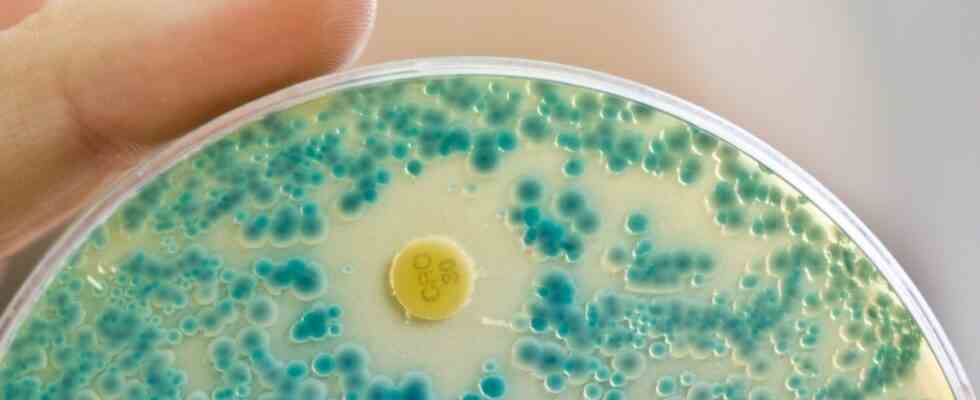There is no shortage of warnings – and have been for many years. “Resistance to antibiotics is a global threat to human health,” writes Ryan Seipke from the University of Leeds in the journal Science. “There is an urgent need to discover new antibiotics whose modes of action circumvent the prevailing mechanisms of resistance.”
Doctors speak of antibiotic resistance when the disease-causing bacteria are not eliminated by an antibiotic – contrary to what was hoped. How often this happens was described by an international research team in the journal at the beginning of the year The Lancet: According to their estimate, more than 1.2 million people worldwide died directly from an infection with a resistant pathogen in 2019. With almost five million deaths, such an infection was at least partly responsible for death. This makes antibiotic resistance one of the most common causes of death worldwide. Co-author Chris Murray from the University of Washington emphasizes that new antibiotics must be developed and brought to market.
A new, computer-aided procedure could contribute to this: In the magazine Science US researchers present the discovery of a promising antibiotic, which they came across through targeted analyzes of bacterial genomes. The active ingredient cilagicin damages bacteria via two different mechanisms. This significantly reduces the risk of resistance, writes the team led by Sean Brady from Rockefeller University in New York.
The new drug attacks in two places. This reduces the risk of resistance
It was only in January that the same research group presented another new antibiotic. Although both active ingredients have not yet been tested on humans, they reliably turn off many resistant pathogens – both in the laboratory and in mice.
“The data are very promising,” says Nadine Ziemert, Professor of Translational Natural Product Genomics at the University Hospital in Tübingen. It is unclear whether the substances actually made it into use in humans. But Brady says his study also shows that his approach to drug discovery is working.
Brady’s team proceeded as follows: First, the researchers analyzed around 10,000 known bacterial genomes for hereditary factors that contain the blueprint for so-called lipopeptides. This group of substances is known to be able to disrupt the growth of bacteria via various mechanisms.
In their search, the researchers came across almost 3,500 groups of genes that appeared promising due to their size and structure. They then concentrated on those gene groups whose lipopeptides were previously unknown. It is hoped that previously unknown substances with novel mechanisms of action would be encountered here. Based on the analyzed areas of the genome, they recreated eight substances in the laboratory. “The molecule that comes out at the end is not necessarily what those genes would make in nature,” explains Brady.
Ultimately, one of the eight substances, cilagicin, proved to be effective against all representatives of a specific group of bacteria (gram-positive). These included a number of pathogens that are notorious in hospitals and health authorities – including resistant enterococci and a good dozen resistant variants of the dreaded wound germ Staphylococcus aureus.
Analyzes showed that cilagicin acts against two molecules that are important for building the cell wall. It is precisely this dual mechanism that apparently prevents resistance, since it is unlikely that a bacterium will develop immunity to both effects at the same time. But experiments on mice initially brought a setback. The reason: the antimicrobial effect was absent in the presence of blood serum. The team then created a cilagicin variant that binds less to blood serum – and thus restored the original effect.

